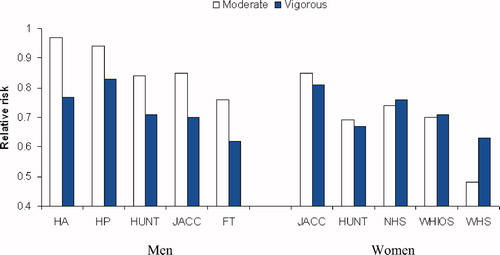Figures & data
Table I. Evidence for a causal relationship between physical activity and reduced risk of chronic diseases, according to Hill's (1965) criteria for causality.
Table II. Perception of effort for various physical activities in men aged 20–29 years of different aerobic fitness levels.
Table III. Perception of effort for various physical activities in men aged 30–39 years of different aerobic fitness levels.
Table IV. Perception of effort for various physical activities in men aged 40–49 years of different aerobic fitness levels.
Table V. Perception of effort for various physical activities in men aged 50–59 years of different aerobic fitness levels.
Table VI. Perception of effort for various physical activities in men aged 60–69 years of different aerobic fitness levels.
Table VII. Perception of effort for various physical activities in men aged 70–79 years of different aerobic fitness levels.
Table VIII. Perception of effort for various physical activities in women aged 20–29 years of different aerobic fitness levels.
Table IX. Perception of effort for various physical activities in women aged 30–39 years of different aerobic fitness levels.
Table X. Perception of effort for various physical activities in women aged 40–49 years of different aerobic fitness levels.
Table XI. Perception of effort for various physical activities in women aged 50–59 years of different aerobic fitness levels.
Table XII. Perception of effort for various physical activities in women aged 60–69 years of different aerobic fitness levels.
Table XIII. Classification of overweight and obesity by body mass index (BMI), waist circumference, and associated disease risks in Caucasians.
Table XIV. Classification of overweight and obesity by body mass index (BMI), waist circumference, and associated disease risks in Asians*.
